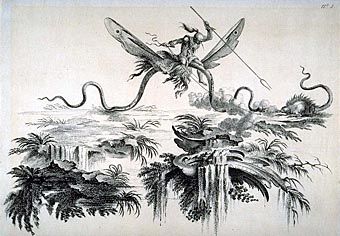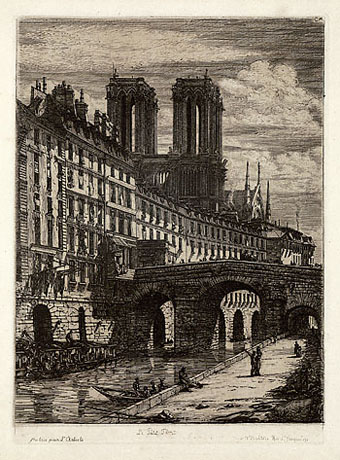
It’s a shame there isn’t more of this imaginative work from Filippo Morghen (1730–1777). In a series of etchings from around 1766 he presents the moon as a tropical world inhabited by the 18th century conception of New World savages. I especially like the hunter on his winged serpent (above) and the elaborate trap set to behead a wary beast (below). The explanatory text is from this print collection which also has large copies of the pictures.
Filippo Morghen was a member of a large family of artists. His brother Giovanni was a painter and printmaker and his son, Rafaello, was a printmaker who specialized in reproductive prints after Raphael and Leonardo. Filippo himself was a designer and printmaker. In addition to the present series on the theme of a voyage to the moon, Morghen is known for a series of plates detailing antiquities from Herculaneum and for views of the environs of Naples.

